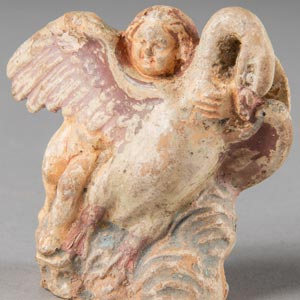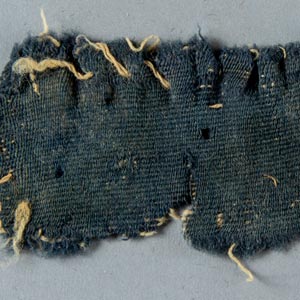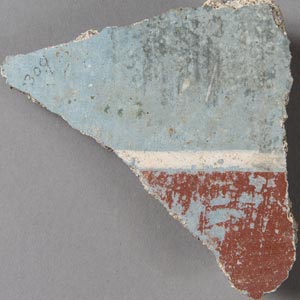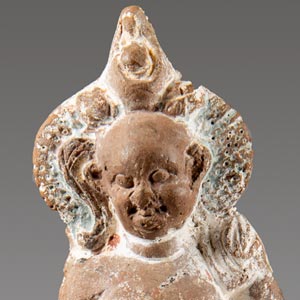Creating Blue

Egyptian blue is the world’s oldest known synthetic pigment. It originated in Egypt over 5,000 years ago, around 3300 BCE. Known production centers were at Amarna and Memphis, and in the Roman period it was also manufactured in southern Italy, around the Bay of Naples. Egyptian blue was relatively inexpensive to produce and was traded throughout the Roman Empire as a less costly alternative to indigo, which was imported from India. In the ancient Egyptian language Egyptian blue was known as hsbd-iryt, which means artificial lapis lazuli.
Precise ingredients and a very hot furnace were needed to create Egyptian blue.
- First, sand, natron (sodium carbonate) or ash, and copper minerals or bronze shavings were mixed to a flour-like consistency.
- This mixture was then rolled into small balls which were placed in a container and put in a furnace.
- The furnace was heated to 850 to 1,000 degrees Celsius, causing the mixture to solidify into a blue, glassy lump called “frit” that could be ground into a pigment.
Egyptian blue ceased to be used as a pigment with the fall of the Roman Empire, but modern researchers are discovering new applications for it. Egyptian blue luminesces (appears to glow as it emits light) in the infrared range, and recent experiments have shown that finely ground (or "micronized") Egyptian blue can be used as a fingerprint dusting powder (read the article).




